Essential Guide to Man Hole Lids: Types, Benefits, and Installation
Discover the different types of manhole lids, their benefits, and installation tips. Enhance your knowledge and make informed choices - read the guide now!
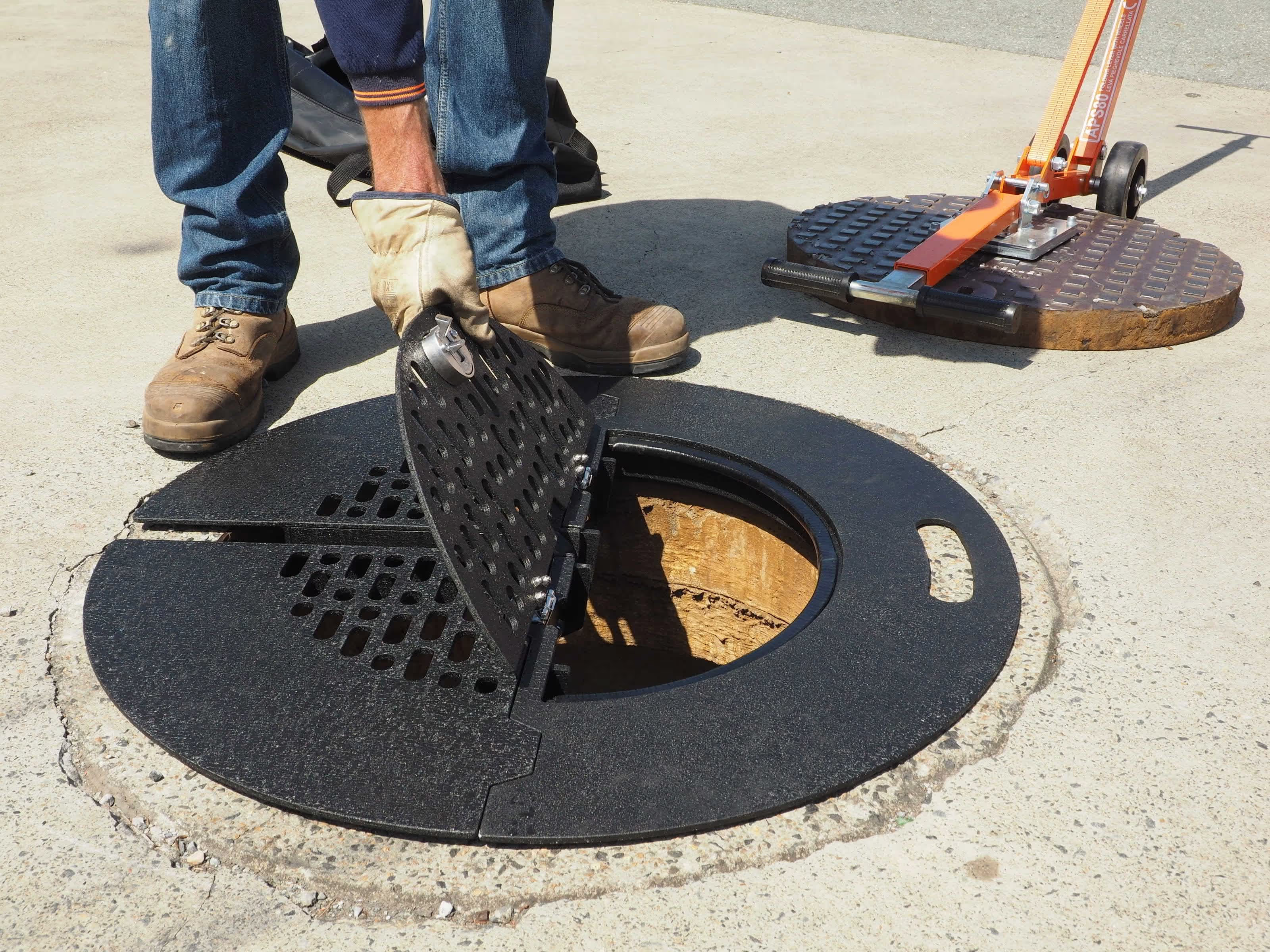

Manhole lids cover and secure manholes, protecting underground systems like sewers and stormwater drains. They come in a variety of materials such as cast iron, composite, and concrete, each designed for specific uses. In this article, we will discuss the types, applications, and benefits of different man hole lids.
Key Takeaways
- Manhole covers are available in various materials, including cast iron covers, composite covers, and concrete covers, each offering specific advantages based on application and environmental conditions.
- Customisable manhole covers enhance functionality and aesthetics, allowing for tailored solutions that meet unique project needs while ensuring safety and compliance with urban infrastructure standards.
- Maintenance and longevity are key factors in choosing manhole covers; options like cast iron and composite lids require minimal upkeep and have longevity exceeding 30 years, contributing to cost-effective urban solutions.
Man Hole Lids: Types and Applications

A round manhole cover is a removable lid over a manhole opening, primarily designed to prevent falls and unauthorized access to underground vaults or pipes. These covers are critical for maintaining the safety and integrity of sewer and stormwater systems. Manhole covers can be constructed from various materials, including:
- Steel
- Metal
- Concrete
- Composites
Each material is chosen based on its suitability for specific locations and expected wear.
Manhole covers are primarily made from composite and cast iron, but custom covers can also use ductile iron and stainless steel based on project needs. Choosing the right manhole lid ensures optimal performance and longevity in sewer and stormwater systems. Different materials offer distinct advantages:
- Cast iron: strength and durability
- Composite: lightweight and corrosion-resistant properties
- Ductile iron: used in custom covers
- Stainless steel: used in custom covers
Customisable solutions also play a significant role in urban infrastructure. Tailoring manhole covers to specific project needs not only enhances functionality but also ensures that the covers blend seamlessly with their surroundings. The versatility in design and material choice makes it possible to address unique challenges, such as high-traffic areas or environments prone to chemical exposure.
Inspection Covers for Manholes: A Critical Safety Measure
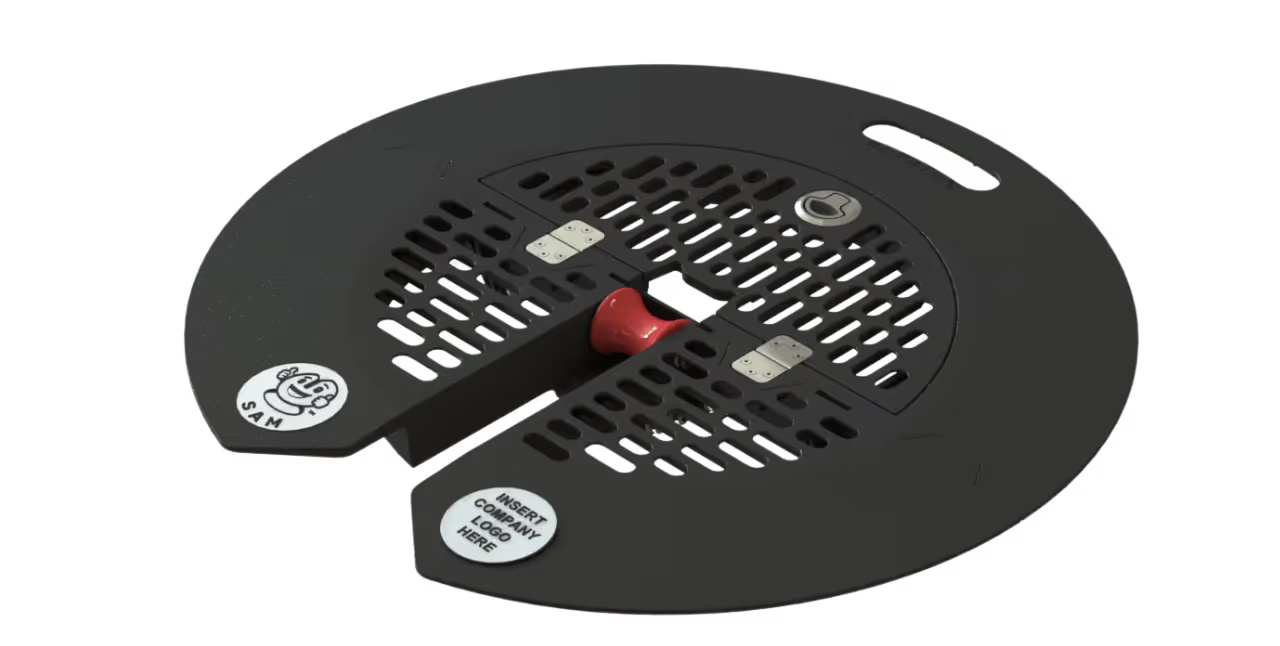
Working around open manholes presents serious safety risks. Not just for workers, but for pedestrians, vehicles, and surrounding infrastructure. That’s why using reliable, purpose-built inspection covers isn’t optional, it’s essential.
At Mass Products, our SAM (Safe Access Maintenance) Grates are engineered specifically to protect workers and the public during inspection, cleaning, and maintenance tasks.
Here’s why SAM Grates are the smarter safety choice:
- Prevent Falls and Accidents
- SAM Grates create a physical barrier over open manholes, reducing the risk of accidental entry or injury on-site.
- Improve Ventilation and Visibility
- The open grate design allows gases to vent safely while enabling light and airflow. Ideal for confined space entry preparation.
- Compliant and Reliable
- Designed to meet local council and utility requirements, SAM Grates help your team stay compliant with workplace safety regulations.
- Fast to Deploy, Built to Last
- Lightweight but heavy-duty, our SAM Grates are easy to handle without compromising on strength, making setup and pack-down quick and efficient.
- Versatile Applications
- Suitable for sewer, stormwater, and utility pits across municipal, industrial, and commercial sites.
When it comes to safe manhole access, don’t cut corners. Choose a solution designed for real-world performance.

Explore the full range of SAM Grates here, designed to fit the majority of manhole access covers across Australia, offering a range in different diameters and shapes, from small to large, all on our website.
Why Manhole Covers Matter: Protecting Crews and the Public
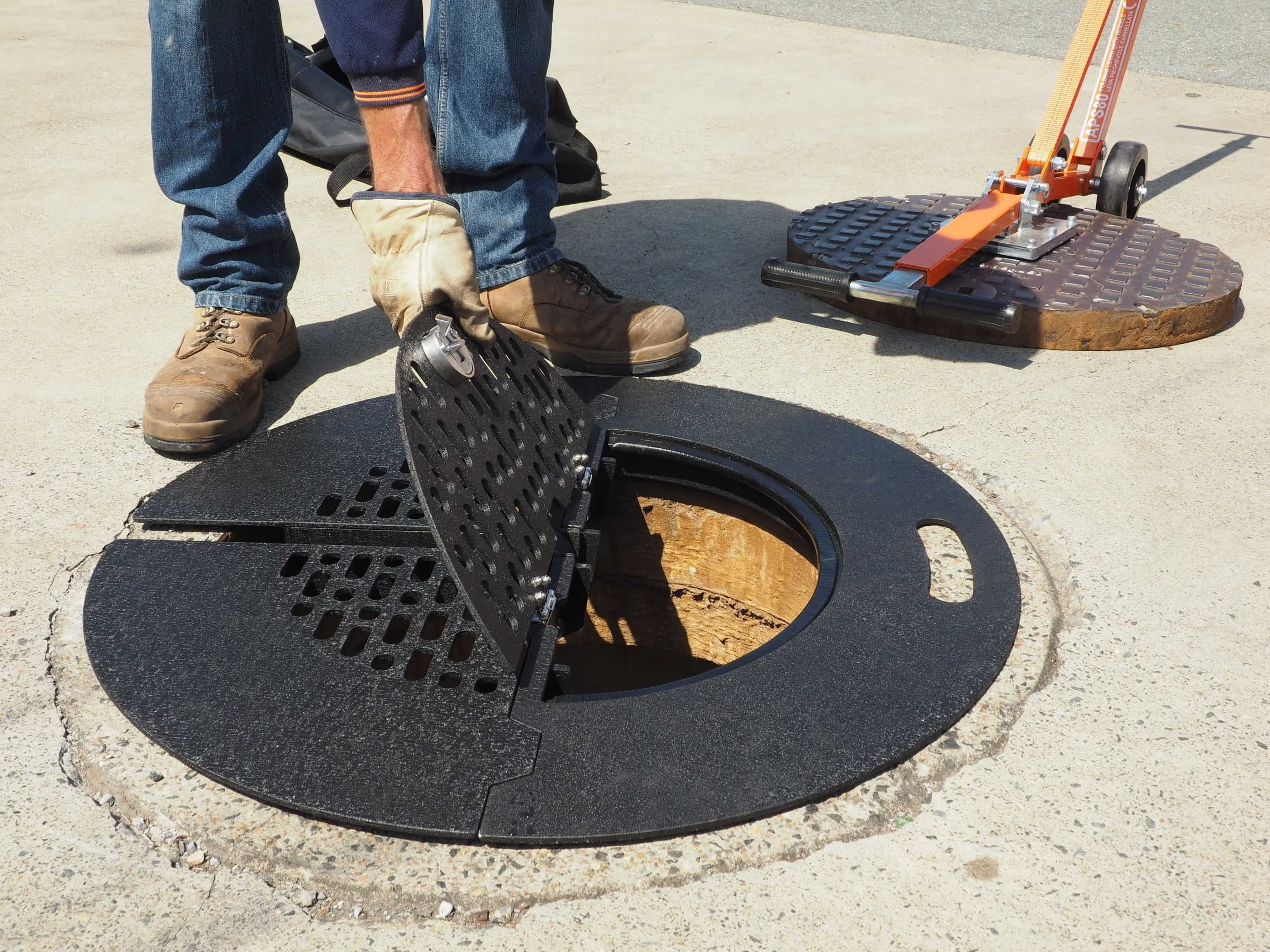
Manholes are access points to critical underground infrastructure, but without proper covers, they can quickly become high-risk hazards.
Beyond physical protection, manhole covers play a key role in:
- Traffic and Site Management
- Covers help delineate work zones and reduce disruptions on roads, footpaths, and high-traffic areas.
- Asset Integrity
- Proper sealing and protection help prevent contamination, vandalism, and environmental damage to underground systems.
- Professional Presentation
- Using engineered, purpose-built covers signals professionalism and compliance. Essential for government contracts and civil works.
The result: whether you’re on a city street or a remote site, quality covers mean safer, more efficient operations.
Cast Iron Man Hole Lids

Cast iron manhole covers are renowned for their strength and durability. Crafted from spheroidal graphite cast iron, these covers offer high tensile strength and elongation, ensuring they can withstand significant stress and heavy loads. Compliance with Australian Standards AS/NZ 3996 guarantees that ductile iron covers meet specific durability requirements, making them suitable for various high-traffic applications. The cast iron manhole cover is an essential component in urban infrastructure.
These covers come in various sizes, such as the 797mm by 625mm models, tailored to meet diverse urban infrastructure needs. Cast iron manhole covers are designed to meet council specifications, ensuring their suitability for use in urban environments. Manufactured in Queensland, these lids include a range of types, including square cover:
- Concrete covers
- Chequer-plate covers
- Infill covers
- Lamp holes
Each type is designed with specific applications in mind.
Each manhole cover typically includes both a cover and frame for installation, ensuring a secure fit and ease of access for maintenance. Cast iron covers’ robustness makes these covers reliable for heavy vehicular traffic areas like roads and industrial zones. Their longevity and minimal maintenance requirements further enhance their appeal, making them a staple in urban infrastructure.
Composite Man Hole Lids
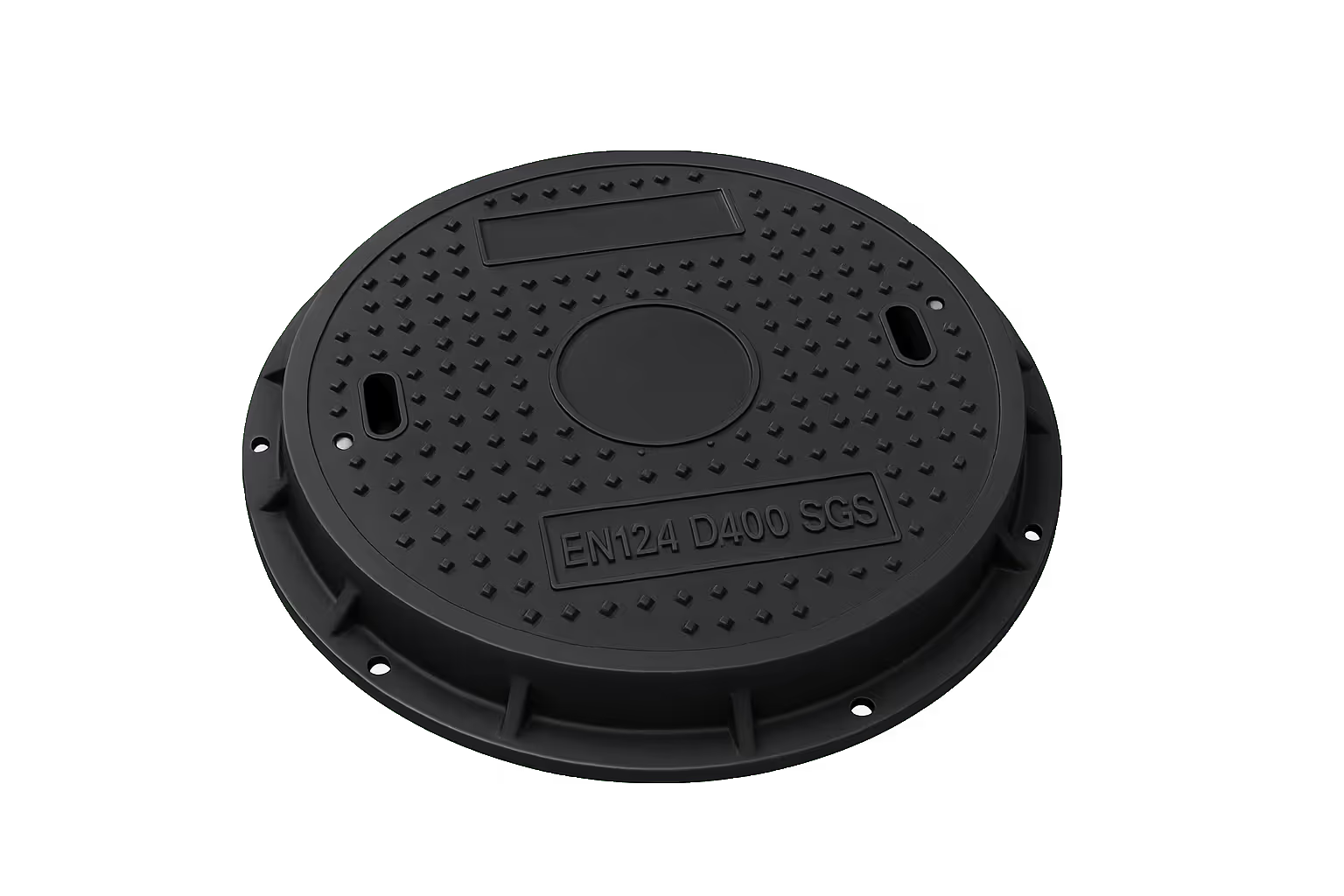
Composite manhole covers, made from materials like fibreglass-reinforced plastics, offer several advantages over traditional cast iron lids:
- Lightweight design, making them easier to handle and install
- Reduced risk of workplace injuries due to easier handling
- Particularly advantageous in areas where frequent access is required
Composite covers have several advantages:
- They are lightweight.
- They reduce noise more effectively than traditional cast iron lids, making them ideal for residential areas.
- Their production has a lower carbon footprint due to less energy consumption during manufacturing and transportation, making them an environmentally friendly choice.
Composite materials are also resistant to corrosion, which extends the service life of these covers and reduces the need for regular maintenance. This durability makes composite manhole covers a cost-effective solution for urban infrastructure, minimizing the need for frequent replacements and contributing to resource conservation.
Concrete Man Hole Lids
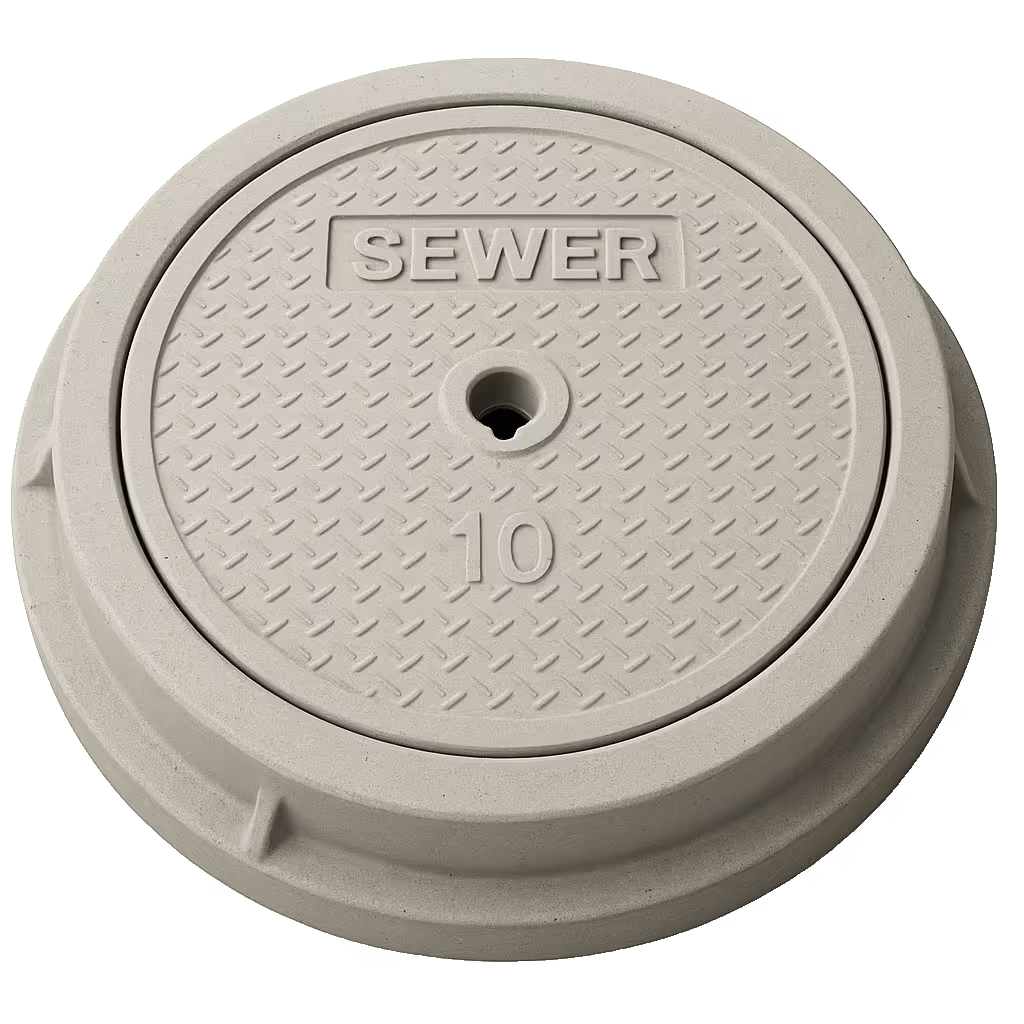
Concrete manhole covers are known for their strength and durability, making them suitable for heavy-duty applications. Precast concrete versions of these covers can handle heavy loads and tough conditions, ensuring long-term performance in urban settings. Their robust construction suits areas with heavy vehicular traffic, like highways and industrial zones.
In addition to their strength, concrete manhole lids are resistant to corrosion and wear, which is crucial for long-term use in urban infrastructure. These lids provide essential access points for maintenance and inspection of underground systems, ensuring the efficient operation of sewer and stormwater networks. Their durability and minimal maintenance requirements make them a reliable choice for urban planners and engineers.
Technical Specifications for Man Hole Lids
Manhole covers are designed to endure heavy loads, with lighter versions accommodating up to 1.5 tonnes and heavier models handling up to 90 tonnes. These covers can achieve a Class G load rating, supporting an ultimate limit state design of up to 900kN. The load ratings are essential to match with the expected traffic and usage conditions, ensuring the covers can withstand the demands of their environment.
Material durability and resistance to corrosion are crucial, especially for solid covers exposed to harsh environmental conditions. The strong weight of manhole lids can vary significantly, with some models weighing as much as 60mm in depth.
These technical specifications ensure that manhole covers provide reliable and long-lasting performance, making them a critical component of urban infrastructure.
Safety Features and Innovations
Safety is a paramount concern when it comes to manhole covers. The weight of cast iron manhole covers, typically between 79 and 136 kg, makes them difficult to handle manually, posing safety risks. However, composite manhole lids made from thermosetting resin offer excellent electrical insulation, minimising the risk of electric shocks to pedestrians. These features are crucial for protecting both workers and the public.
Some safety access covers have the following features:
- Water and gas-tight, preventing hazardous substances from escaping while making handling easier.
- Anti-slip surfaces in residential areas to enhance pedestrian safety.
- Australia lids, which offer greater fall prevention for workers above ground.
- In-built safety grates in Australia lids that are lightweight and ergonomically friendly for field staff.
Innovative manhole lids often include the following safety features:
- Void protection systems that minimise the risk of accidents by providing barriers around open access points.
- Lockable covers that are vital in public areas to prevent unauthorised access and ensure safety.
- Proper weight distribution on manhole covers to prevent stress that could cause cracks or fractures.
These innovations in safety design ensure that manhole lids provide a security and reliable solution for urban infrastructure.
Maintenance and Longevity
Manhole covers can have a lifespan exceeding 30 years due to their robust construction. Cast iron manhole covers require minimal maintenance, as they do not need regular cleaning or repainting to maintain their functionality. This longevity makes them a cost-effective solution for urban infrastructure, reducing the need for frequent replacements.
Composite manhole covers offer several benefits:
- They do not rust, eliminating the need for regular painting and maintenance associated with cast iron lids.
- Their durability extends service life, leading to fewer replacements and less waste in urban infrastructure.
- They are often recyclable, helping to minimise landfill waste and promoting resource conservation at the end of their lifecycle.
Environmental Considerations
Environmental sustainability is a growing concern in the manufacturing of manhole lids. Key aspects include:
- Use of recycled materials, contributing to environmental sustainability.
- Covers resistant to corrosion and chemical agents, ensuring durability in harsh environments.
- Special consideration for sewer systems subject to chemical exposure.
- Use of environmentally friendly materials in production to help ensure a sustainable future.
The lighter weight of composite coverings makes transportation more efficient, as more units can be shipped at once, reducing CO2 emissions. Choosing materials and manufacturing processes that prioritise sustainability significantly reduces the industry’s ecological footprint. This commitment to sustainability is vital for the long-term health of our urban environments.
Choosing the Right Man Hole Lid
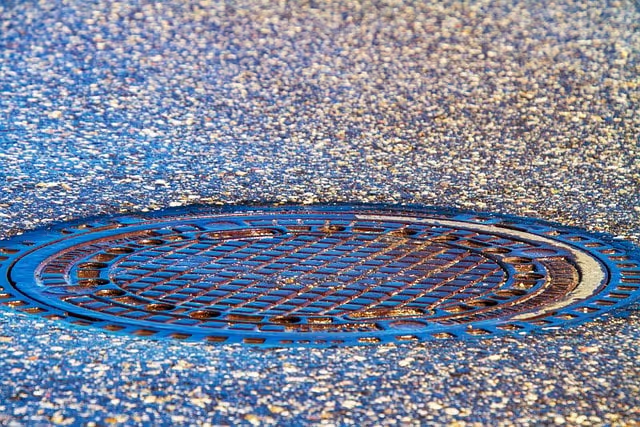
Choosing the right manhole cover involves considering several factors:
- Load-bearing capacity
- Safety features
- Drainage capabilities
- Location
- Traffic intensity
- Type of materials used
Manhole covers are used in various applications, including sewage systems, gas lines, and electrical access points in both residential and commercial settings.
Theft of composite manhole covers is less likely, as there is minimal market demand for their resale compared to metal covers. Manhole covers designed for easy access allow maintenance crews to work efficiently.
Safety features that enhance worker safety and operational efficiency are crucial considerations. By carefully evaluating these factors, you can select a manhole cover that meets your specific needs and ensures the longevity and safety of your infrastructure.
Choosing the Right Manhole Cover: Cast Iron, Composite or Concrete?
When selecting a manhole cover, material matters. Not just for strength, but also for lifecycle, cost, and environmental impact.
- Cast iron covers are traditional and extremely durable, often used in heavy-traffic or industrial zones. They offer high load ratings but can be heavier to handle.
- Composite covers are lightweight, non-conductive, and corrosion-resistant. Ideal for modern urban infrastructure.
- Concrete covers work well in low-traffic areas but may chip or degrade over time if not reinforced.
Choosing the correct frame class and material type ensures compliance with local standards and keeps your project cost-effective without compromising on safety.
Summary
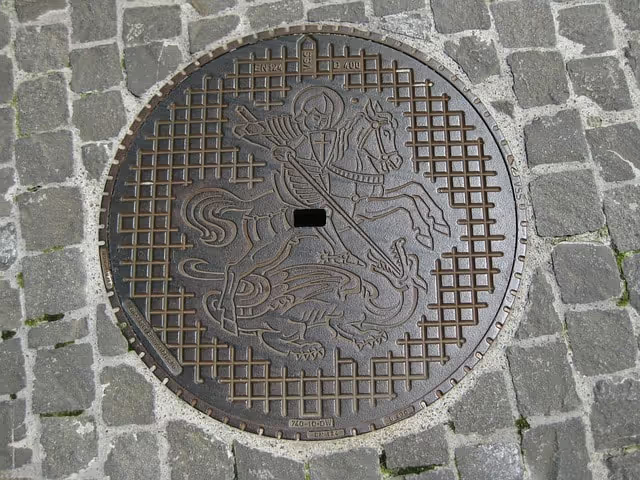
In conclusion, manhole covers are an integral part of urban infrastructure, providing access to essential underground systems while ensuring safety and durability. From the robust cast iron lids to the innovative composite designs, each material offers unique benefits tailored to specific applications.
By understanding the various options and their advantages, you can make informed decisions that enhance the efficiency and longevity of your sewer and stormwater systems. Mass Products™ remains committed to delivering high-quality, customisable solutions that meet the evolving needs of modern infrastructure, such as our Safety Grate or SAM designs for inspecting man holes, from small to large.
Alternately contact the team at Mass Products™ today for a quote or demo.
Frequently Asked Questions
What are the primary materials used for manhole covers?
Manhole covers are primarily made from composite materials and cast iron, with options for custom covers in ductile iron and stainless steel. These materials ensure durability and strength for public infrastructure.
Why are inspection covers necessary when working on manholes?
Inspection covers are essential for both safety and functionality when working on manholes. They prevent unauthorised access, reduce the risk of accidents, and protect workers and the public from open access points. Additionally, covers help keep debris, water, and contaminants out of the system, ensuring the integrity of the underground infrastructure. Using properly rated covers also helps comply with industry standards and local regulations during maintenance or repair work.
What are the advantages of composite manhole covers?
Composite manhole covers are advantageous due to their lightweight nature, corrosion resistance, and effective noise reduction. Additionally, they contribute to a lower carbon footprint from decreased energy consumption in their manufacturing and transportation.
How long do manhole covers typically last?
Manhole covers typically last over 30 years thanks to their robust construction, with composite covers being especially durable and recyclable. This longevity makes them a reliable option for infrastructure, especially when utilising solid top covers or iron covers.
What is a frame class and why does it matter?
Frame class refers to the load-bearing rating of a manhole cover and frame system. Choosing the correct class ensures your cover can safely support the expected traffic. Whether it’s light pedestrian use or heavy vehicle access. Always check local council or utility authority guidelines before specifying a frame class.
Are there specific surface patterns or textures I should look for in a manhole cover?
Yes, surface patterns like diamond, checker plate, or ribbed textures play a vital role in improving grip and reducing slips. This is especially important in wet conditions or public areas where pedestrian touch is possible. Our SAM Grates feature anti-slip designs as part of our commitment to safer access.
What’s the difference between a solid cover and a removable plate?
A removable plate is designed for temporary access, allowing quick entry into a manhole or pit without disturbing the surrounding structure. In contrast, a solid cover is often heavier and more permanent, suited for areas that require long-term sealing or load-bearing strength. Choosing between the two depends on your maintenance schedule and the type of system you’re accessing.
What factors should be considered when choosing a manhole cover?
Choosing a manhole cover requires careful consideration of load-bearing capacity, shape, safety, frame class, weight, safety features, drainage capabilities, location, traffic intensity, and material type. These factors ensure you select a cover that meets functional and safety requirements effectively.
Can I get advice on which inspection cover is suitable for my project?
Absolutely. At Mass Products, we’re happy to provide expert advice on selecting the right cover or grate based on your site requirements, traffic load, and material needs. Whether you need composite, concrete, or steel solutions, we help you meet compliance and performance standards. Contact us today for tailored support.
How can I get in touch for a quote or custom size?
We’re happy to help with product advice, quotes, or custom specifications. Simply contact us here or call our team directly. We’ll guide you through selecting the right inspection cover for your event, project, or site needs.

Visit our office

Gold Coast, QLD Australia
Mass Products™ is based in the Gold Coast, QLD. We offer our services Australia-wide and products internationally.

Phone - domestic
1300 191 960
















.svg)






